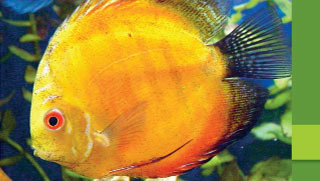Fungal Infections in Fish
Fungal infections are among the most common diseases seen in tropical fish. Because fungal spores are found in all fish aquariums, they can quickly colonize and create problems in stressed, injured, or diseased fish. Poor water quality can exacerbate the situation and lead to an increase in fungal infections in a seemingly healthy fish population. Most aquarium owners are able to easily identify external fungal infections. Most fungal infections have a characteristic white fluffy appearance and are commonly known as 'cotton wool disease.' As the fungal infections worsen, they may take on a gray or even red appearance. Fortunately, most fungal infections only attack the external tissues of fish and eggs. Most infections are usually associated with a preexisting infection or injury and this is why a two-part treatment is often necessary to properly treat infected fish. There are a few fungal infections that will infect the internal organs of fish and they will be discussed a little later. Fungi are present throughout most aquariums, but certain conditions increase outbreaks of fungal infections including:
Aquariums with fish that have reoccurring fungal infections need to be examined for hygiene, filtration, and water quality. Healthy aquarium environment should rarely have fish with fungal infections.
Cotton Wool Disease Treatment for cotton wool disease in freshwater fish includes salt baths using Freshwater Aquarium Salt or commercially available antifungal treatments for aquarium use. In some instances, the entire tank is treated, but if individual infections are present, treating the fish in a separate hospital tank is preferable. Individual topical application of the anti-fungal and anti-bacterial agent Gentian Violet is also a treatment option.
Egg Fungus Once an egg has become infected there is no practical treatment. Infected eggs should be immediately removed with a pipette, needle, or forceps. It is important the aquarium owner does not confuse a healthy opaque egg with a fungal infected egg. Many breeders use Methylene Blue to help control fungal infections on the eggs.
Gill Rot
Systemic Fungal Infections It should be pointed out that many of the traditional fungal diseases such as mouth fungus and tail rot are often not fungal infections at all but really bacterial infections. Antibiotics such as nitrofurazone found in preparations like Furanase have often proven successful in treating many of these 'fungal' infections.
Summary |
||
|
|




